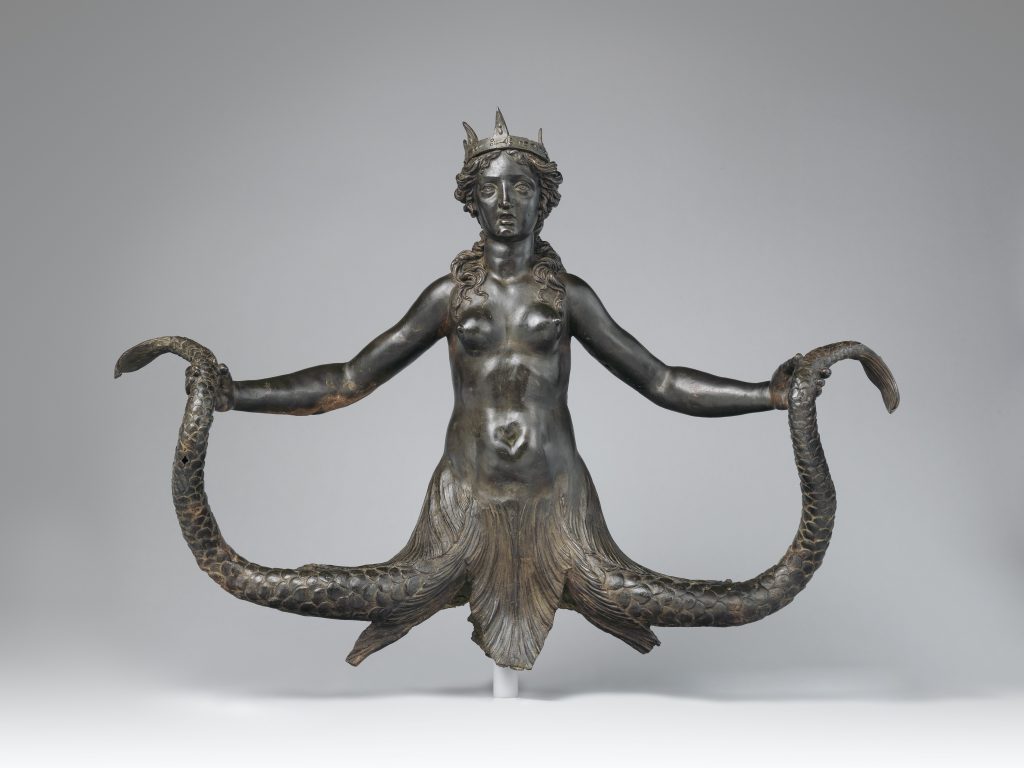
The differences between sirens and mermaids have become obscured over the centuries and perhaps the two mythological creatures have been confused since the Homeric tales of Odysseus were first passed from mouth to ear. Homer, of course, did not describe the physical attributes of the siren but has Circe describe their danger thus:
To the Sirens first shalt thou come, who beguile all men whosoever comes to them. Whoso in ignorance draws near to them and hears the Sirens’ voice, he nevermore returns, that his wife and little children may stand at his side rejoicing, but the Sirens beguile him with their clear-toned song, as they sit in a meadow, and about them is a great heap of bones of mouldering men, and round the bones the skin is shrivelling. But do thou row past them, and anoint the ears of thy comrades with sweet wax, which thou hast kneaded, lest any of the rest may hear. But if thou thyself hast a will to listen, let them bind thee in the swift ship hand and foot upright in the step of the mast, and let the ropes be made fast at the ends to the mast itself, that with delight thou mayest listen to the voice of the two Sirens. And if thou shalt implore and bid thy comrades to loose thee, then let them bind thee with yet more bonds.
Accordingly, from Homer’s description it is clear that these mythological creatures were land-dwellers. However, the fact that Odysseus’s task is to sail past these dangerous and beguiling creatures, connects them tangentially to the marine-based mermaid. Italian cultural and artistic traditions have further conflated the winged women of the meadows (who used their voices to lure sailors to their grassy abodes where the men would be murdered) with the semi-human marine creatures whose beauty and compelling song would cause vessels to break upon the rocks or men to dive into the ocean and be dragged into its depths.
Pliny the Elder, the Roman army commander, naturalist and philosopher (active until his death in 79 AD), also mentioned both mermaid and siren in his Naturalis Historia. In 9:4 of this encyclopaedic work, he describes sightings of ‘Tritons’ and ‘Nereids’: these being real hybrid creatures – human in form with scaled bodies. And in a chapter entitled ‘Fabulous Birds’, he describes the Siren ( a creature that he does not believe to exist). Calling on the recollections of Dinon, the father of Clearchus, Pliny writes that, ‘they exist in India, and … they charm men by their song, and, having first lulled them to sleep, tear them to pieces’.
Sixteenth-century Italian literature also supported the existence of merpeople, with Ulisse Aldrovandi’s Monstrorum Historia documenting sightings of these mythological creatures.
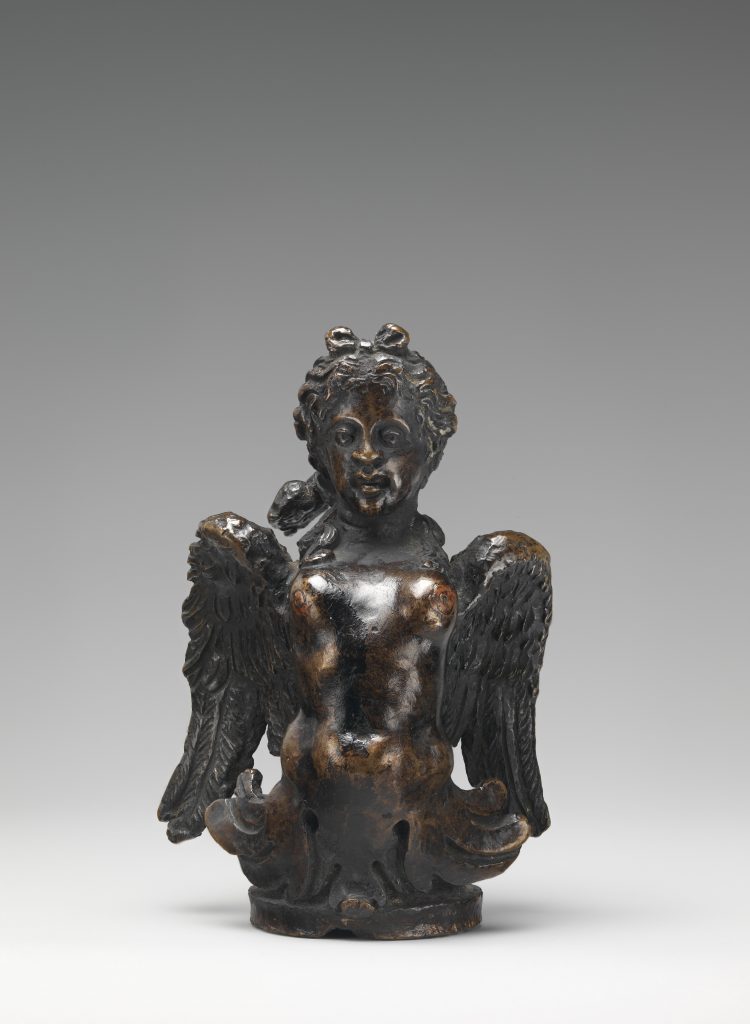
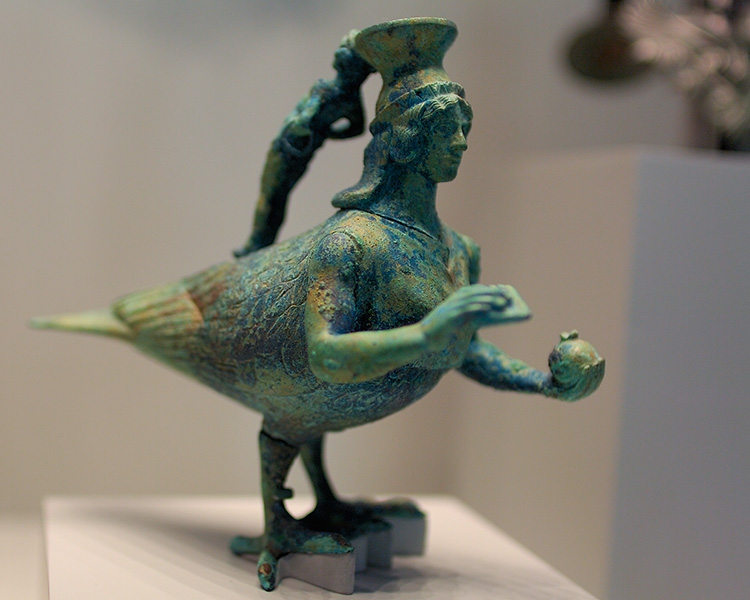

Ashmolean Museum.
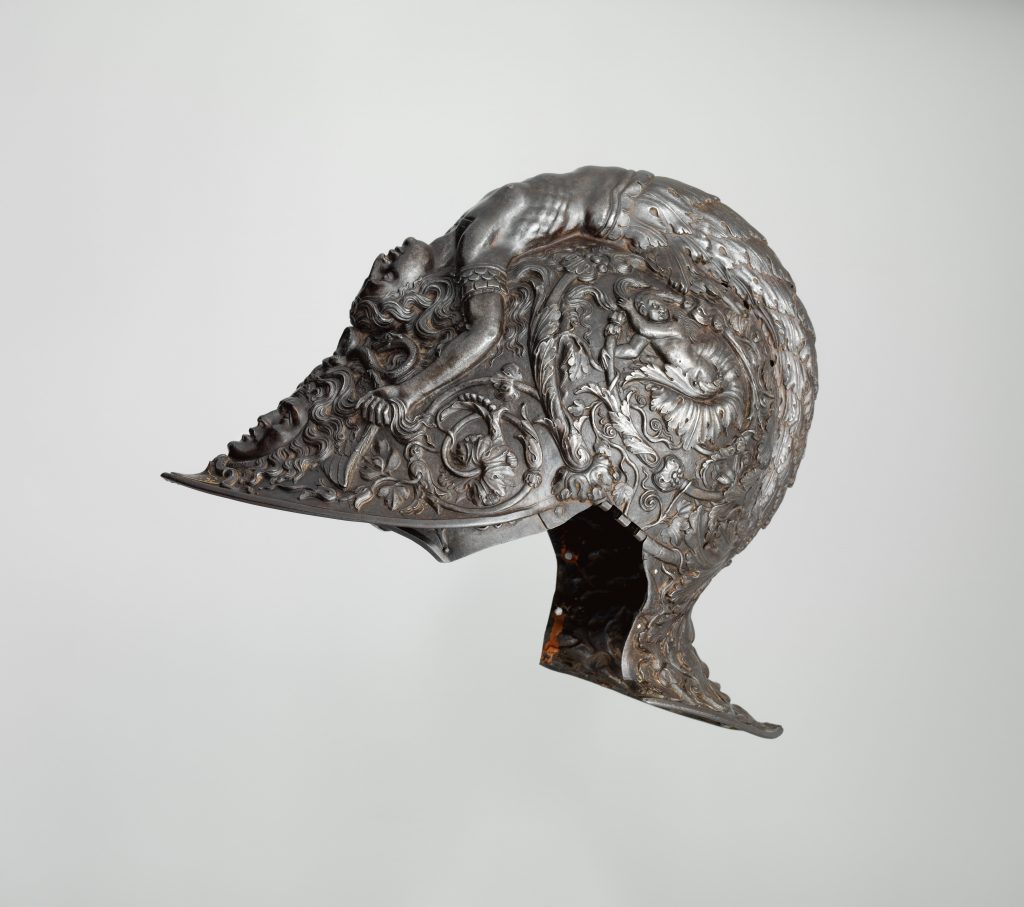
Italy however, has a longstanding relationship with the hybrid mermaid/siren. In 2018, CNN produced a report entitled, ‘Italy’s Mermaid Battle: Naples vs Ventotene’, which explored the claims of two areas that both purport to be the site of Odysseus’s siren encounter. Venice too, being a republic with ancient maritime traditions and a city-state that is built out of the lagoon there, claims its own connections to mermaids and other mythological creatures of the sea.
In Italian art also, while there exists an established delineation between the inhabitants of Neptune’s realm and those residing in the Homeric world, the hybrid double-tailed siren/mermaid motif is simultaneously extant in its own sub-category. Possibly the visual amalgamation of the mermaid and the siren has been proliferated by translations between Italian and English – the Italian for both creatures being sirena.
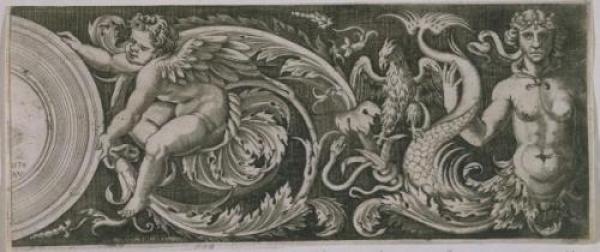


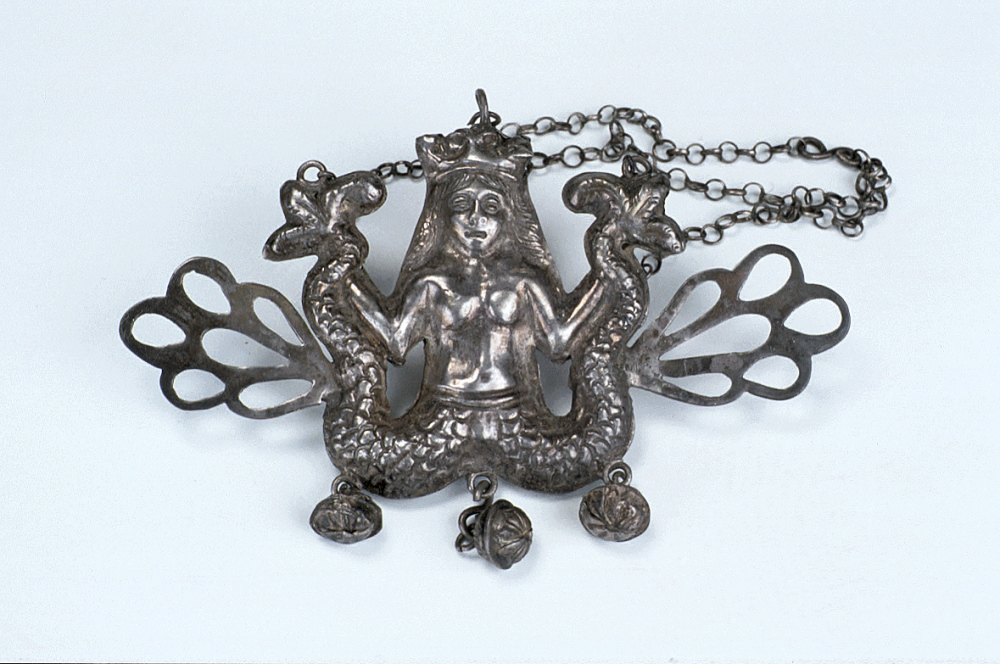

MS M.459 fol. 8r, The Morgan Library and Museum, New York. © The Morgan Library & Museum
References:
Ulisse Aldrovandi, Monstrorum Historia, Bologna, 1642.
Bartlett-Rawlins, B., ‘Mermaids’. Victoria and Albert Museum Blog, 30 April, 2012.
Hitchcock, J., ‘Sirens: A Symbol of Fear’, Classical Wisdom, 22 May, 2019.
Luchs, A., The Mermaids of Venice: Fantastic Seas Creatures in Venetian Renaissance Art, Brepols: Turnhout, 2010.
Pliny the Elder, Natural History, Trans. John F. Healy, London: Penguin, 1991.
